A journey to cultivate your very own herb garden is not only a rewarding endeavor but also a fantastic way to add a burst of flavor and freshness to your culinary creations. Imagine stepping outside your door to harvest a handful of fragrant basil for a homemade pesto or plucking some fresh mint leaves for a refreshing summer beverage.
If you're ready to dive into the world of herb gardening, you're in the right place. In this blog, we'll explore the top 7 herbs you can grow from seed, offering insights into each herb's unique characteristics, growing requirements, and the satisfaction that comes from nurturing these green wonders from the very beginning of their life cycle.
Whether you're a seasoned green thumb or a novice gardener, this guide will provide you with valuable tips and tricks to help you successfully cultivate a thriving herb garden from seed. Let's get started on your herbal adventure!
Herb seedlings do best when grown indoors in spring/summer and exposed to warm temperatures and lots of natural light. Be careful to keep the soil moist but not soggy to avoid fungal diseases like damping off.
Use a clean container such as a recycled yogurt or milk carton, pot, or seedling trays to start your herbs. Fill them with a loose, well-draining potting mix.
Basil
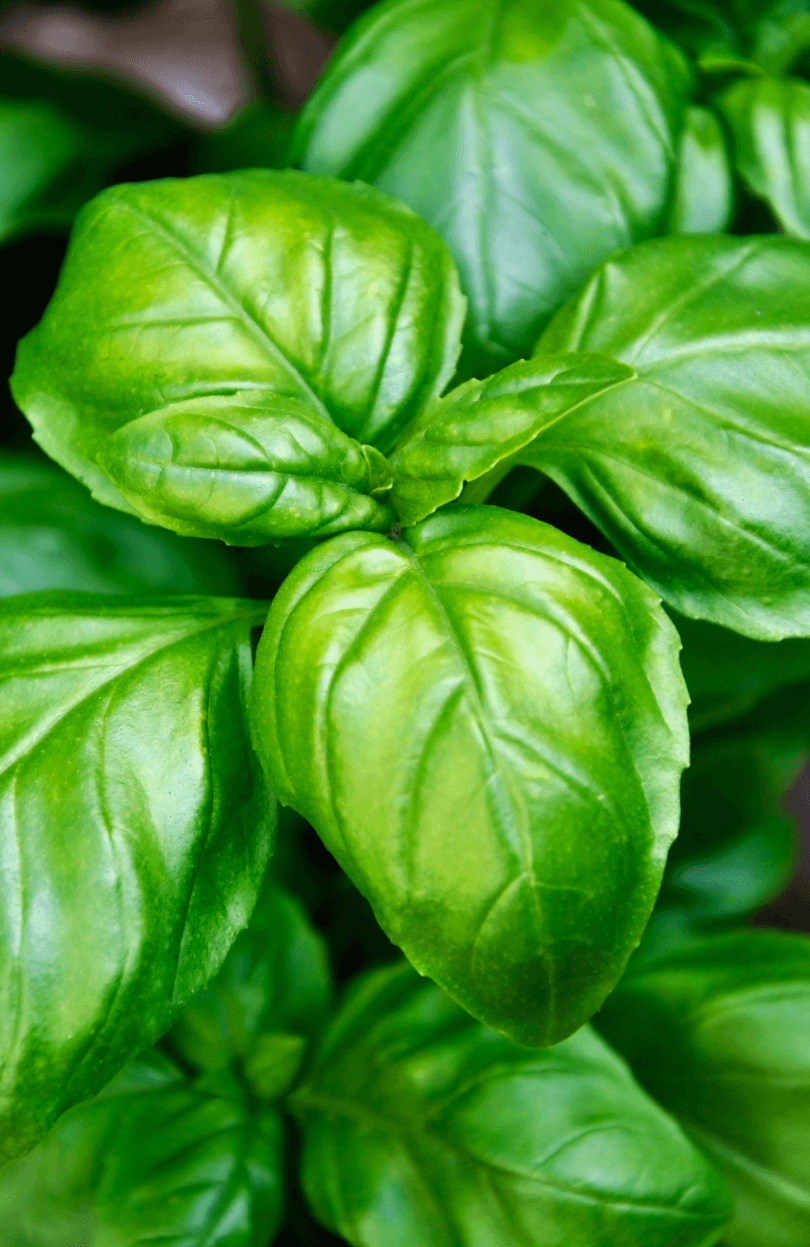
One of the first herbs you can start growing from seed is basil. It is a great herb for cooking, and a natural breath freshener. It is also a good herb to grow for wellness as it contains many vitamins and minerals, especially Vitamin A, K, C, E, and B6. It is also rich in antioxidants, and has anti-inflammatory properties.
Basil is easy to grow, and can be direct sown in spring in garden beds or containers. However, most gardeners choose to start basil seeds indoors around three to four weeks prior to the average last frost date, and then transplant out when temperatures are warm enough. Basil seeds love a warm, sunny location with plenty of light. They prefer soil that is moist, but well-draining.
Like other members of the mint family, basil plants thrive in long and warm days, so it is important to water them often. This is a good herb to grow with a water-smart irrigation system, which will ensure that the soil is being properly irrigated without overwatering.
To prevent lanky basil plants, pinch off the growth tips when they reach about 4 inches tall (or use garden snips). This signal will cause them to focus their energy on growing side shoots and will create bushier and more robust herb plants. It is also recommended to bury the stems of your basil plants a little bit deeper than you would typically do for most vegetables, as this will help them stay strong and sturdy.
Rosemary
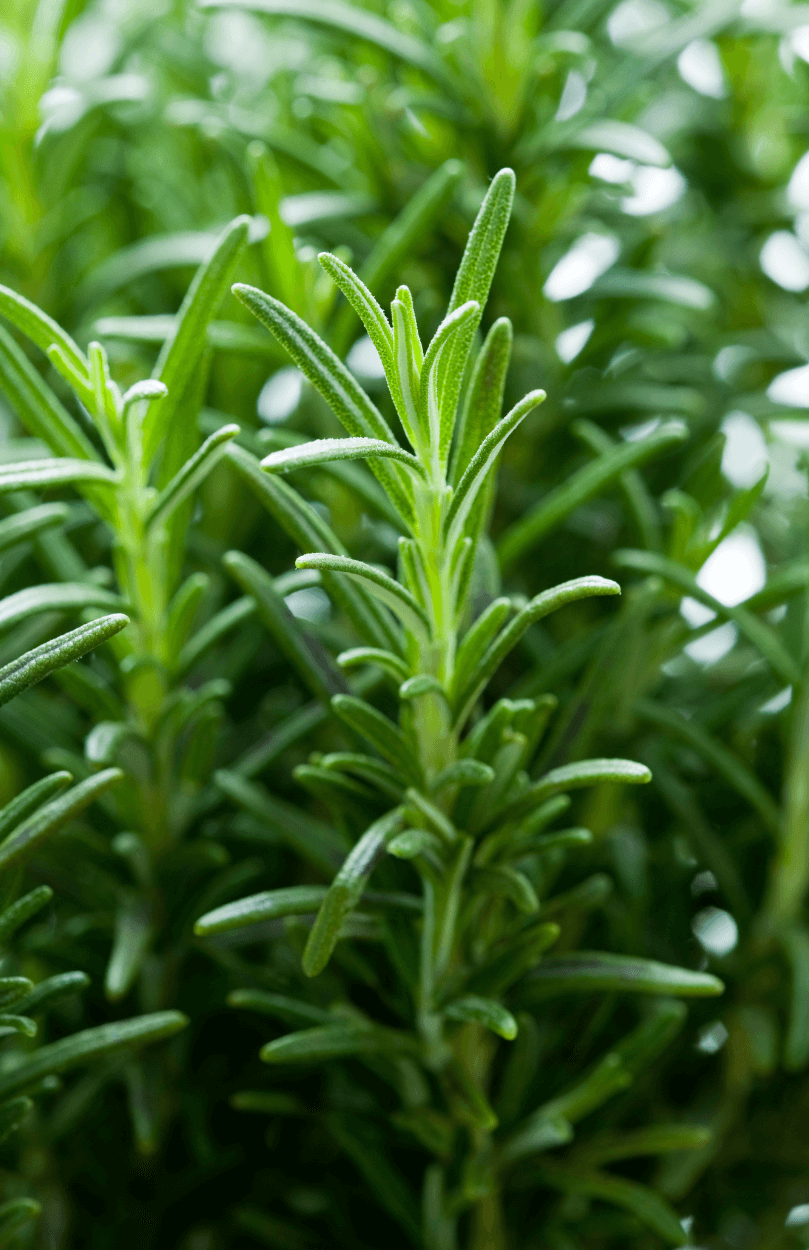
For this fragrant herb, you can start seeds indoors and transplant them outdoors when the weather is warm enough. For the best results, grow them in a sunny location with well-draining soil that is rich in organic matter. It is also a good idea to mulch with compost and provide regular fertilization, such as worm castings or fish emulsion.
The seed packets for your herbs will provide important information on their germination requirements, including planting depth and plant spacing. Most will require light to germinate and should be placed on or near the surface, while others need to be buried at a certain depth to sprout and grow properly. If your herb seeds are slow to grow, try adding a little horticultural sand to the starting mix to help them along.
Once your herb seedlings are ready to be planted outside, carefully dig a hole in the garden bed that is larger than the transplant's root ball and amend the soil as needed. Herbs are not picky about the type of soil they grow in, though richer soil tends to produce healthier and more aromatic plants.
If you choose to direct sow your herbs, remember that they require at least six hours of sunlight per day after germination, which is why it is best to start them indoors first. If you don't have a south facing window that can provide this much light, purchase grow lights online and position them at least 4" above the seedlings, adjusting the height as they mature.
Thyme
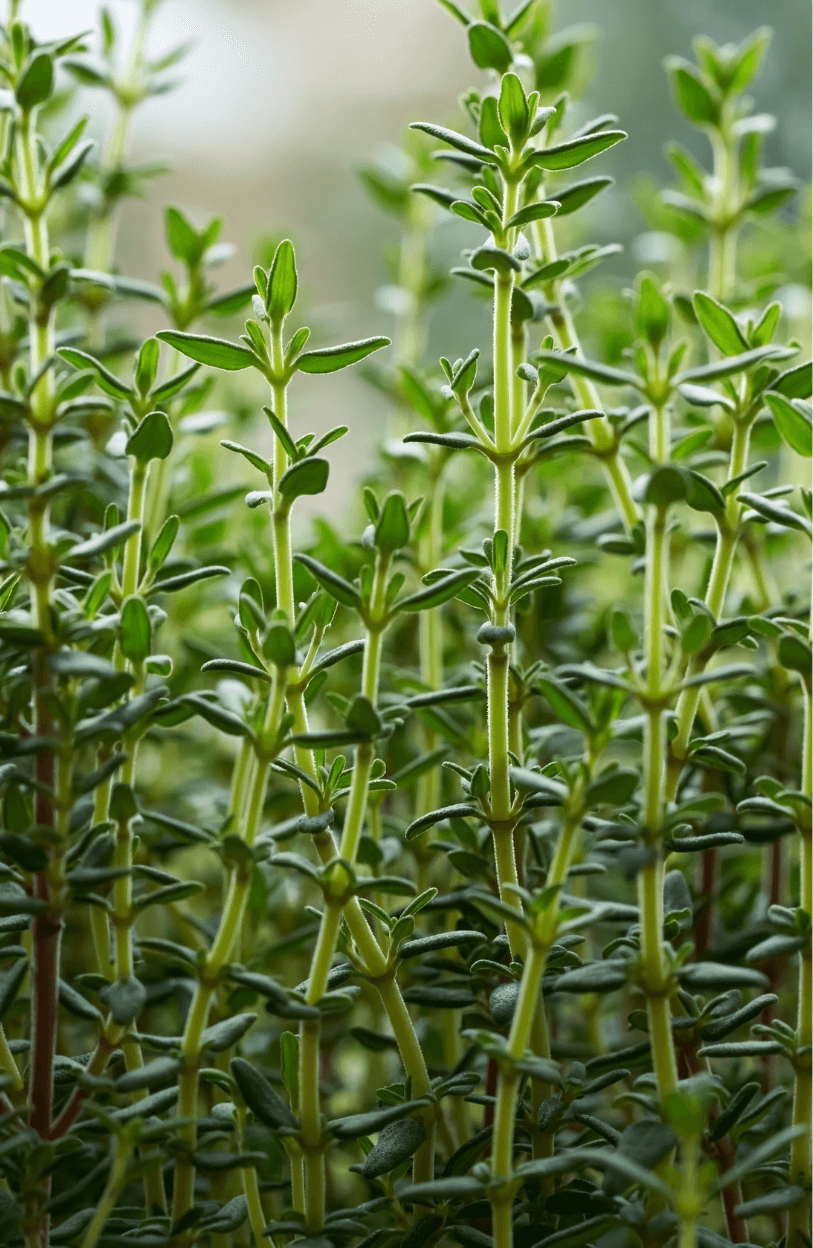
This fragrant herb is often used to season and preserve meats, vegetables and sauces. It is also a popular ingredient in herbal remedies and teas. You can grow thyme from seeds, cuttings or root divisions. This hardy herb thrives in most climates, but it's best harvested in spring or summer, when the weather is warm and there are more hours of sun.
To start thyme from seed, fill a planting tray with free-draining potting soil. Dampen - but don't over - water the soil, then create shallow, quarter-inch deep planting furrows with your finger. Sprinkle thyme seeds finely over the soil, spacing them two inches apart.
Cover the trays with clear plastic or a piece of newspaper, then slide them into a warm spot to encourage germination. Keep the soil damp but not soaking wet, and mist it if necessary to maintain proper moisture levels.
Once the herbs germinate, thin them to give each seedling its own space. After that, water the plants regularly and apply half-strength liquid fertilizer at recommended rates and intervals while the plants are actively growing.
Growing your own herbs is not only a rewarding experience, but it's also healthier for you and the environment than purchasing store-bought plants grown with chemical fertilizers and pesticides. Sow your own herb seeds this spring and you'll enjoy fresh, flavorful home-grown herbs all year long. Happy gardening!
Oregano
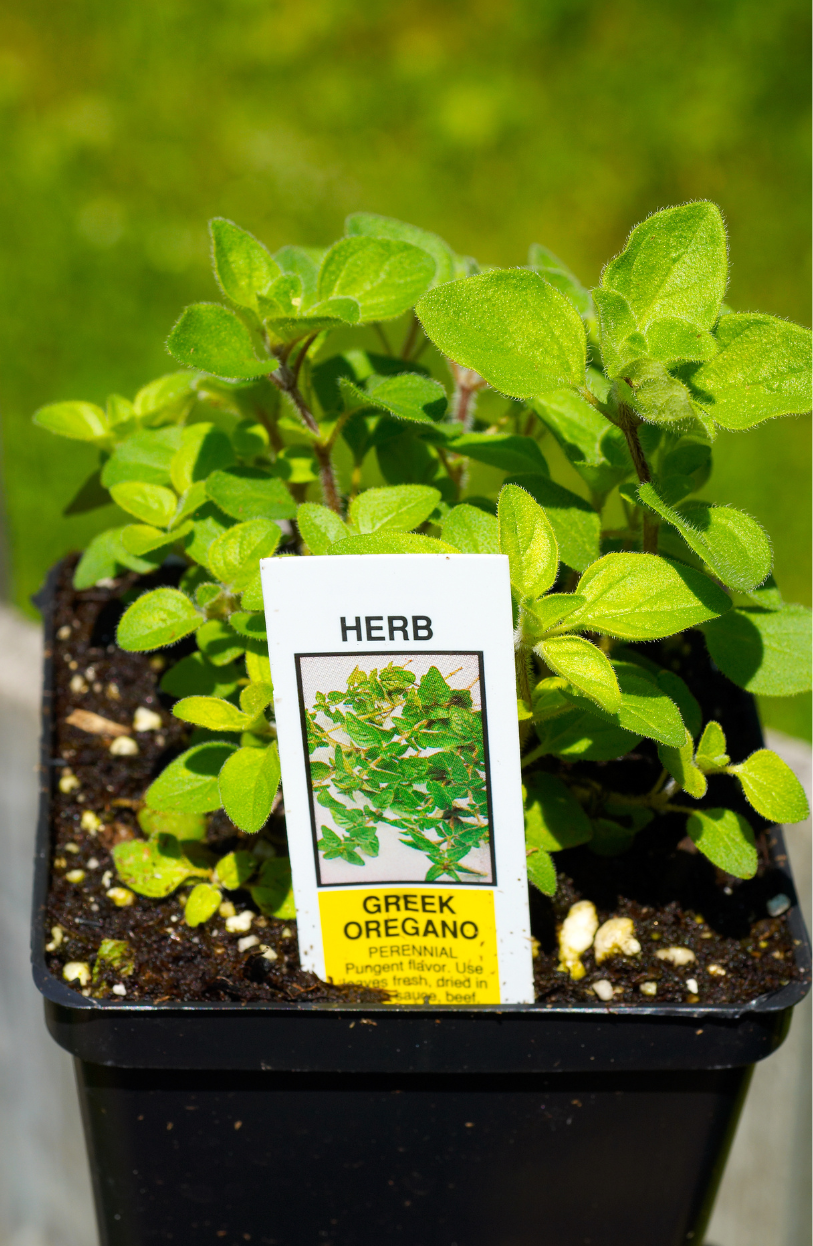
Thanks to pizza (and many other dishes), most people are familiar with the savory flavor of oregano. You can find fresh oregano packed in clamshells and in loose bunches at most supermarkets and farmers markets. You can also grow your own oregano at home from seed - it's easy, fun and deeply rewarding.
Like most herbs, oregano seeds need bright light for optimal germination. Most gardeners start their plants indoors, but they can be planted outdoors anytime after the ground warms up in spring. If you choose to grow them indoors, remove the plastic covering as soon as the seeds sprout to allow them to adjust to outdoor conditions more quickly. Most experts recommend using a seed starting mix instead of regular potting soil, which contains fertilizers designed for full-grown plants that can burn or overstimulate young herb seedlings.
Herbs need rich, well-draining soil with plenty of organic matter, but they don't want it too wet or they will rot. Water only when the soil is dry to the touch - and be sure to water thoroughly rather than often.
Once the herbs have two sets of true leaves, start fertilizing with half-strength liquid organic nutrient (fish emulsion or worm casting tea is good) and repeat as needed. Herbs also benefit from being weeded and pruned regularly to encourage growth, shape and branching. Herbs are generally pest-free, but if you notice aphids or caterpillars on the plants, you can use insecticidal soap to get rid of them.
Parsley
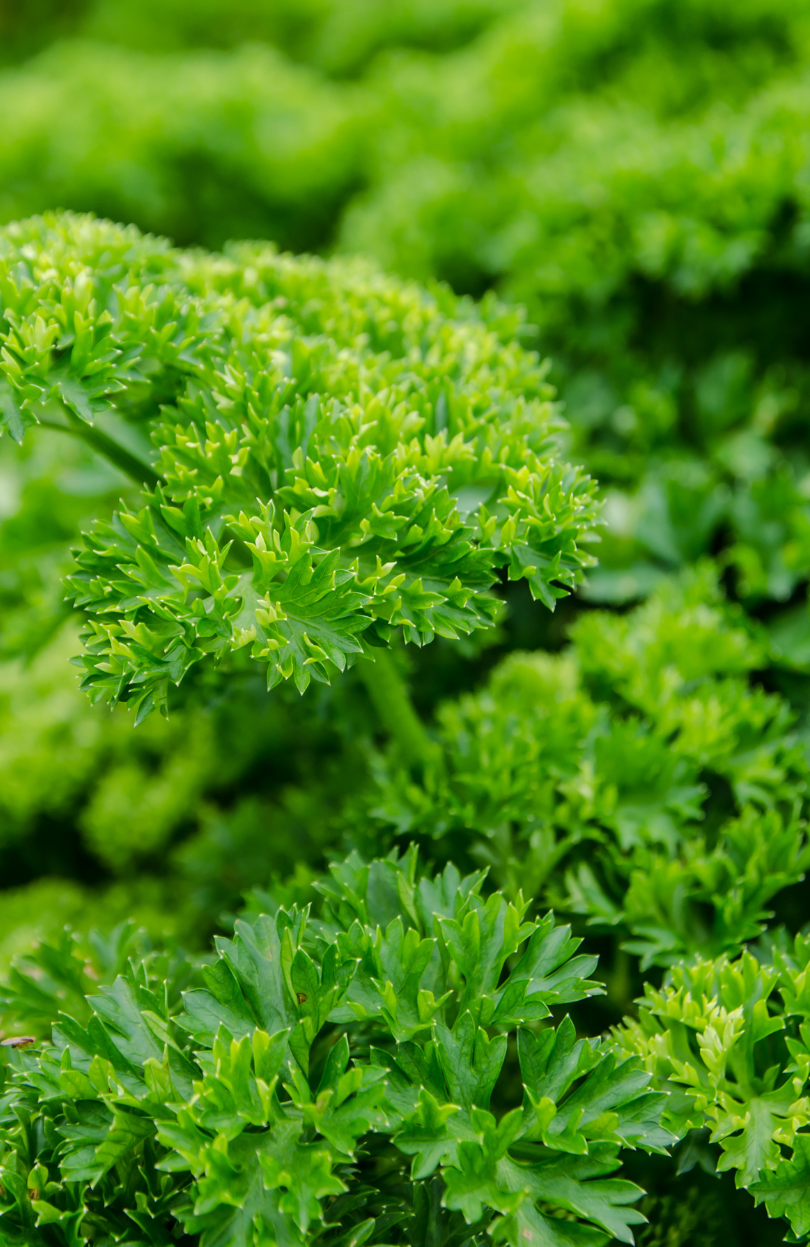
Parsley (Petroselinum crispum) is an easy to grow herb that adds zesty, fresh flavor to many dishes. It's also rich in vitamins A and C, several B vitamins, iron, and calcium. It's said to cure bad breath and cleanse the skin, too. It's a biennial plant that flowers in its second year, but it can be harvested regularly to encourage new growth and a continual harvest.
Parsley seeds can be sown indoors now, or outdoors in mid-spring. It's a cool season crop and will bolt in hot temperatures, so I would recommend covering the soil with a cloche when sowing outside. If you prefer to sow in the garden, work the soil to a fine texture and lightly moisten it before planting. Then scatter the tiny seeds evenly over the surface of the soil and cover them 3 times as thick as their diameter.
To help with germination, mix the seeds with a small amount of horticultural sand and then sprinkle them over the planting area. Cover the seeds with a thin layer of soil and gently press down. For best results, sow the herbs in a sunny location with good air circulation.
Most herbs have very few pest problems, but if you do notice any, pull or hoe weeds and water the plants as needed. Herbs like well-draining soil, and adding organic matter will improve the soil's quality. Mulch can be used to conserve soil moisture, but it should not touch the base of the plant.
Mint
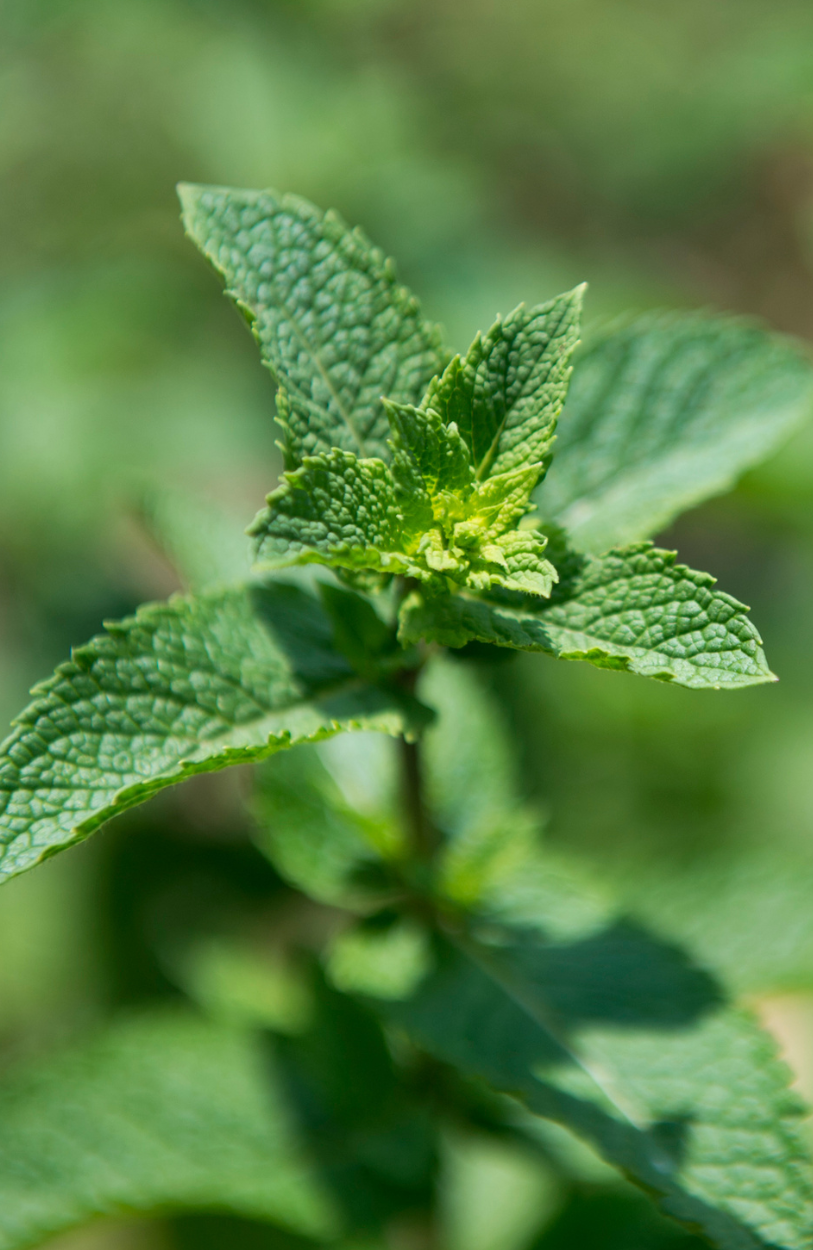
Mint is a versatile herb that comes in various flavors and is perfect for teas, cocktails, and culinary dishes. It's known for its refreshing taste and potential health benefits. Mint can be easily grown from seeds or cuttings, making it an excellent addition to your herb garden.
To start mint from seeds, you can follow similar steps as with other herbs. Use a clean container filled with a well-draining potting mix. Mint seeds require bright, indirect light to germinate, so place them on a sunny windowsill or use grow lights if natural sunlight is limited. Keep the soil consistently moist but not waterlogged. Mint seeds usually germinate within 7-14 days.
Mint is a vigorous grower, so it's a good idea to give it plenty of space or consider planting it in a container to prevent it from taking over your garden. In fact, many gardeners prefer to grow mint in pots or containers to keep its growth in check. This also allows you to move the containers to take advantage of the best sunlight and protect them from harsh weather conditions.
As mint grows, you can harvest the leaves regularly to encourage new growth and maintain the plant's shape. Mint is also prone to pests like aphids and spider mites, so keep an eye on your plants and address any issues promptly. Companion planting with mint can help deter some common garden pests.
With the right care, you'll have a constant supply of fresh mint for your culinary creations and refreshing beverages.
Coriander
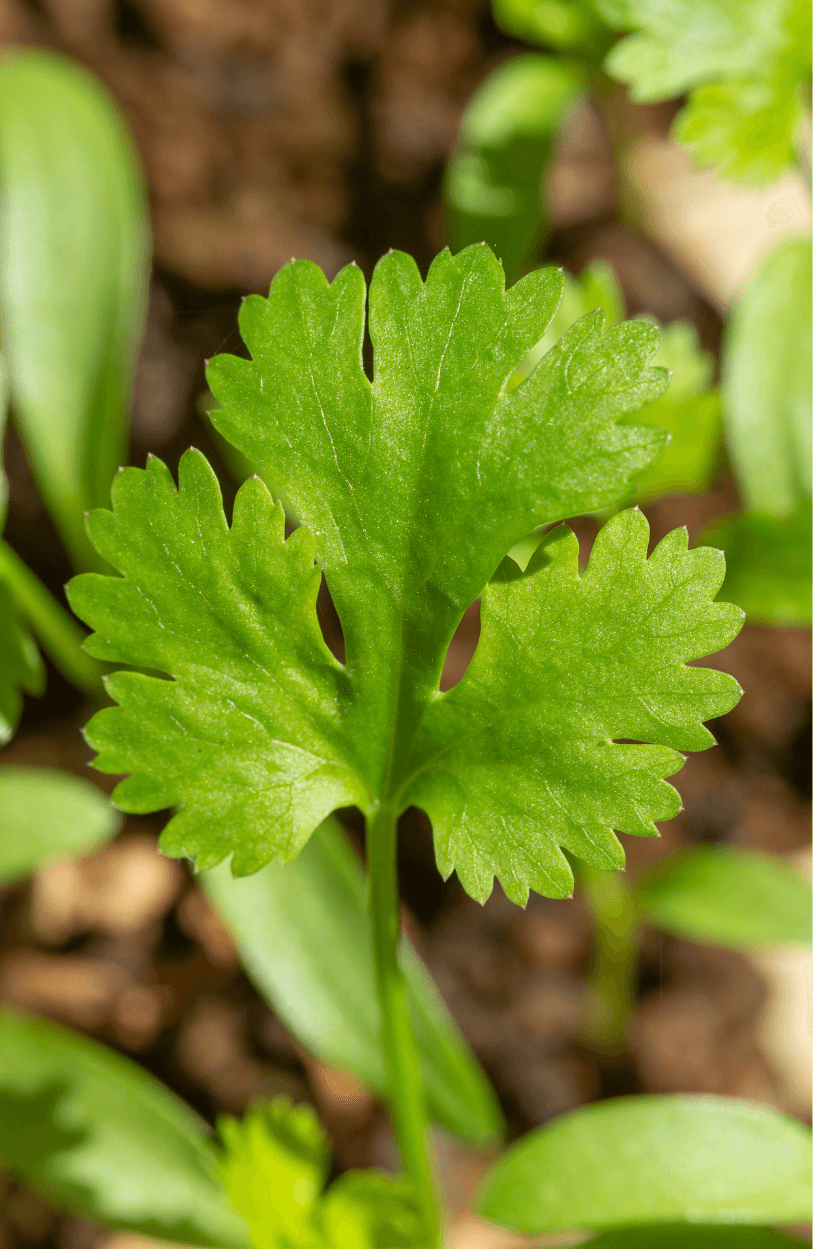
Cilantro, also known as coriander in some regions, is a popular herb in various cuisines, especially in Mexican, Indian, and Thai dishes. It adds a unique, citrusy flavor to your recipes. Growing cilantro from seeds is relatively simple and allows you to enjoy its fresh leaves in your dishes.
Cilantro prefers cool weather, so it's best to sow the seeds in the early spring or late summer. You can start cilantro seeds directly in your garden or in containers. Sow the seeds about a quarter-inch deep in well-draining soil. If you're planting in rows, space them about 6-8 inches apart.
Ensure that the cilantro plants receive partial shade in hot climates to prevent them from bolting (going to seed) too quickly. Once the plants are established, keep the soil consistently moist but not waterlogged.
Cilantro can be quick to bolt in warm weather, which means it will produce flowers and seeds and stop producing leaves. To extend the harvest of cilantro leaves, pinch off the flower buds as soon as you notice them. This will encourage the plant to keep producing tasty foliage.
With some care and attention, you can enjoy a steady supply of cilantro for your favorite dishes throughout the growing season.
In conclusion, growing herbs from seeds is a rewarding and environmentally friendly way to have a fresh supply of flavorful and aromatic herbs at your disposal. Whether you're into cooking, herbal remedies, or simply enjoy the fragrance of these herbs, starting your own herb garden is a fulfilling and sustainable endeavor.
Happy gardening, and may your herbs thrive and enhance your culinary creations!




Condividi e ottieni il 15% di sconto!
Condividi semplicemente questo prodotto su uno dei seguenti social network e sbloccherai il 15% di sconto!